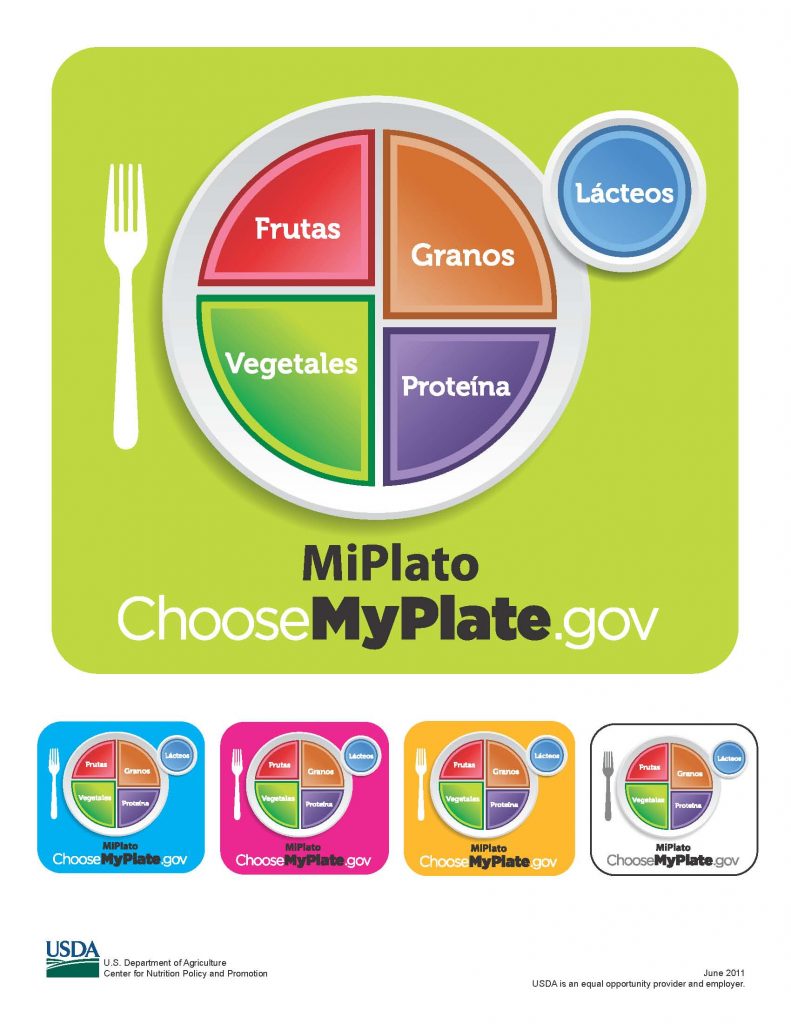MiPlato Makes Healthy Eating Fun for Latino Families

Last January, a remarkable thing happened at a popular supermarket in Tampa, Florida. First Lady Michelle Obama visited to announce MiPlato and a partnership with Goya Foods, the largest Hispanic-owned food company in the United States.
¿MiPlato? You might be thinking. ¿Y qué es MiPlato?
 ` MiPlato is the Spanish version of the USDA food icon, MyPlate, which replaced the Food Pyramid as the nation’s new food group symbol. As a shape that we can all relate to, MiPlato makes healthy food choices easy and fun at mealtime and is supported by the 2010 Dietary Guidelines for Americans.
` MiPlato is the Spanish version of the USDA food icon, MyPlate, which replaced the Food Pyramid as the nation’s new food group symbol. As a shape that we can all relate to, MiPlato makes healthy food choices easy and fun at mealtime and is supported by the 2010 Dietary Guidelines for Americans.
The plate colorfully illustrates in Spanish what and how to eat by capturing the five food groups that are the building blocks for a healthy diet: frutas (fruits), vegetales (vegetables), granos (grains), proteína (protein), and lácteos (dairy).
Here’s how MiPlato works:
First, fill half of your plate with fruits and vegetables. They can be fresca (fresh), crudo (raw), cocinado (cooked), de lata (canned), conge-lado (frozen), or even jugo (juice). Once you are done, you’re already halfway done preparing your healthy meal.
Next, add grains. There are two types of grains to choose from: whole or refined. Whole grains are much more nutritious than refined grains, and should be consumed more often. Refined grains include corn and flour tortillas, chips, white rice, and white bread, but should be limited. So experiment! Next time, try whole grains like whole-wheat tortillas with dinner, oatmeal for breakfast, air-popped popcorn as a snack, or wild rice for lunch.
Protein foods make up the fourth food group. While meat like beef, pork, lamb, and poultry are popular, other great protein options include seafood, beans, and nuts. My favorite proteins include fish, almonds, and Latin dishes like machaca and ropa vieja (shredded beef), pollo asado (roast chicken), and tacos al pastor (pork tacos). Beans also top my list, especially since they are affordable, healthy, and delicious. My picks are: frijoles negros (black beans), habichuelas (red kidney beans), frijoles charros (cowboy beans), garbanzos (chickpeas) and my Mom’s congri (rice and black beans).
Last but not least, add dairy foods to your MiPlato. Dairy should be low-fat or non-fat milk, cheese, or yogurt.
Traditional Hispanic cheeses like queso fresco (fresh cheese) and queso blanco (white cheese) are reasonably priced in Hispanic supermarkets and provide fresh, low-fat, and low-cholesterol options.
You did it! Now it’s time to enjoy and eat your MiPlato.
Beyond the fun of this healthy eating guide, MiPlato also holds a critical nutritional message for Latino families. In 2010, 27.9% of Latinos were food insecure and had limited access to healthy food at almost double the national food insecurity rate of 14.5%. Additionally, Latinos are more likely to be obese, and more likely to experience the many chronic diseases that accompany obesity, such as diabetes. Today, 40% of Latino children are either overweight or obese as compared to 30% of all U.S. children, and one of every two Latino children born in 2000 or later is expected to contract diabetes.
While co-existing hunger and obesity rates might seem paradoxical, the linkage is due to more Latinos living in poverty.
According to a 2011 Pew Hispanic Center study, Latinos were the hardest hit of any racial and ethnic group during the recession. Between 2005 and 2009, Latinos lost 66 percent of their wealth, mainly due to the housing crisis. Thus, when food dollars are squeezed, the tendency to purchase caloric dense foods rather than nutrient rich foods can occur due to their affordability, subsequently impacting diet and health.
Thus, it is important for Latino families to know that USDA resources like MiPlato and the Supplemental Nutrition Assistance Program (SNAP) can help families stay healthy. SNAP provides eligible families with another means to afford nutritious foods that might be out of their budget reach. MiPlato guides us toward healthier eating.
If MiPlato can be fun and good for you, then its message will keep nuestros niños strong and successful in school, and nuestras familias happy and healthy at home.
¡Buen provecho!
To learn more about MiPlato in Spanish, visit http://www.choose myplate.gov/en-espanol.html To learn more about MyPlate in English, visit http://www.choosemyplate.gov/





